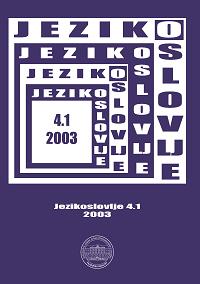Introduction: Metonymy across languages
Introduction: Metonymy across languages
Author(s): Linda L. Thornburg, Klus-Uwe PantherSubject(s): Language and Literature Studies
Published by: Filozofski fakultet, Sveučilište Josipa Jurja Strossmayera, Osijek
Keywords: metonymy; metaphor; cognitive linguistics; rhetoric
Summary/Abstract: The six papers in this special issue of Jezikoslovlje originated as presentations for the thematic session entitled “How Universal are Conceptual Metonymies? A Cross-Linguistic Comparison,” that we organized for the 7th International Cognitive Linguistics Conference held at the University of California, Santa Barbara, CA, July 22-27, 2001. The authors of the contributions that constitute this special issue share the firm conviction that metonymy is a pervasive cognitive phenomenon with considerable impact on language use and language structure. This thesis may, at first sight, seem surprising to readers who think of metonymy as a “garden-variety” figure of speech that since antiquity has been listed in rhetorical handbooks as a stylistic device of minor importance. The kinds of intriguing empirical questions that present themselves with regard to the cross-linguistic study of metonymy include: 1. Are there metonymic principles that are operative in all languages, i.e., are there metonymic universals?2. Is it possible to find a typological classification of the world’s languages in terms of metonymic principles and how would it differ from grammar-based classifications? 3. How do metonymic principles interact with grammatical structure? 4. How do individual languages differ in the exploitation of individual high-level metonymies? While we are not yet close to answering the first and second questions, interesting answers have been given by the contributors of this issue to the third and the fourth questions.
Journal: Jezikoslovlje
- Issue Year: IV/2003
- Issue No: 1
- Page Range: 5-9
- Page Count: 5
- Language: English

